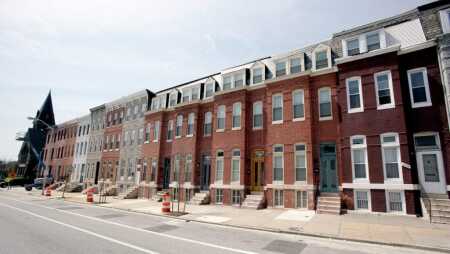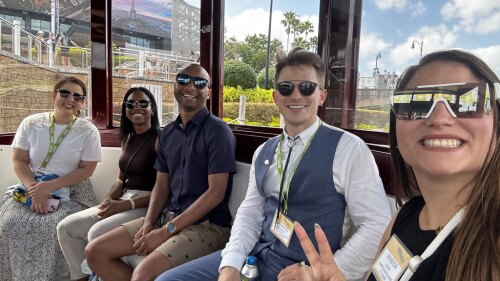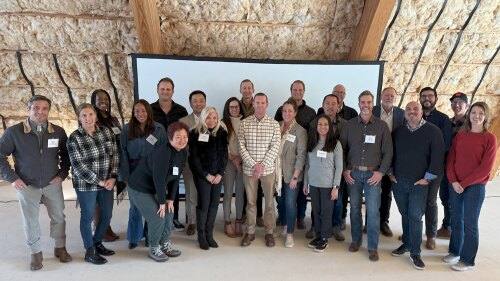The long-awaited revision to Baltimore’s zoning code, which took effect in June, includes a highly anticipated new zoning category—“industrial mixed-use”—which both city officials and local developers hope will spur economic development while preserving neighborhood character throughout the city.
“We’re really hopeful that this new code . . . will help remove some barriers and provide some new tools to fuel more development in underserved areas across the city,” Tom Stosur, Baltimore’s director of planning, said during a ULI Baltimore panel discussion in April about the new code.
Baltimore’s zoning code update—the first since 1971—took years and hundreds of public meetings to finalize. The process began in earnest in 2012, and, after years of revisions and public debate, was approved by the Baltimore City Council and signed by then mayor Stephanie Rawlings-Blake in December 2016. The new code arrives at a critical moment for the city, which is still losing population while other major East Coast cities have either seen population stabilize or gained residents.
The new industrial mixed-use category will allow for residential development in areas that were traditionally industrial but now are attractive to tenants and developers who want to mix light-industrial space with office and residential uses. A new “office industrial campus” category also aims to encourage development that mixes light-industrial and office space.
A new “neighborhood commercial conditional use” category will allow for new, creative uses of commercial buildings or spaces that are in primarily residential neighborhoods. It allows, for instance, property owners of closed corner stores or churches to convert them to offices, retail space, or service-provider establishments. Previously, if a property owner wanted to change the use of a commercial building in a residential neighborhood, the request required approval by the city council.
“From a private sector perspective, this is one of the best things about the new code,” said Ryan Potter, an attorney with Gallagher, Evelius, and Jones. He said that as many as ten projects he represented in recent years that required council approval would not require it now. “It can save you a lot of money and time.”
“Development was really hindered by the process,” said Josh Neiman, ULI Baltimore chair of mission advancement and principal at Hybrid Development Group.
In addition, several generic use categories were introduced into the new code to keep it flexible and up to date, said Laurie Feinberg, Baltimore’s assistant director of planning. The previous code had separate categories for highly specific uses; now generic categories encompass uses that have similar impacts on parking, loading, and servicing. This minimizes the need to change the code when a use becomes obsolete—such as video stores that popped up on street fronts in the 1980s. “We had to revise the code for video stores that are now no longer,” Feinberg said.
A major issue that has not been resolved is how to handle parking lots in a city where new housing or businesses would be a much better use for developable land, Feinberg noted. An initial proposal was to eliminate the ability to build new parking lots downtown, but the city council was not ready to take that step. Feinberg said the city will form a working group focused on parking and is eager to partner with ULI Baltimore on the issue.
ULI Baltimore and the city have partnered on several projects aimed at neighborhood revitalization, including several technical assistance panels on key corridors. One of these is Pennsylvania Avenue, a once-vibrant area that has been in decline for several decades. Several ULI members were also involved in drafting the new zoning code.
The new code is more user friendly than the old version: it presents all information in easy-to-read tables and provides much-needed clarity to local developers seeking sites for infill development, said Neiman.
“This update was a long time coming and long overdue,” he said. “As part of the process, the city looked at every single address and determined what the appropriate zoning is for that address. They looked at what development has taken place on the ground and where they want to direct development in the future.”
Baltimore is known for its authentic and quirky neighborhoods. It was recently labeled “the coolest city on the East Coast” in a Travel + Leisure magazine article. The goal of the new code is to preserve neighborhood character while also providing new opportunities for redevelopment.
“Baltimore is called a city of neighborhoods, which is wonderful, but sometimes the transitions between them are stark,” Neiman said. The new code aims to smooth out some of the stark transitions while also preserving the unique identities of those neighborhoods.
“The whole idea behind this effort was to get rid of an antiquated code, make it flexible and user friendly, and look toward the future while embracing Baltimore’s history,” Neiman said.
Get involved with ULI Baltimore.







